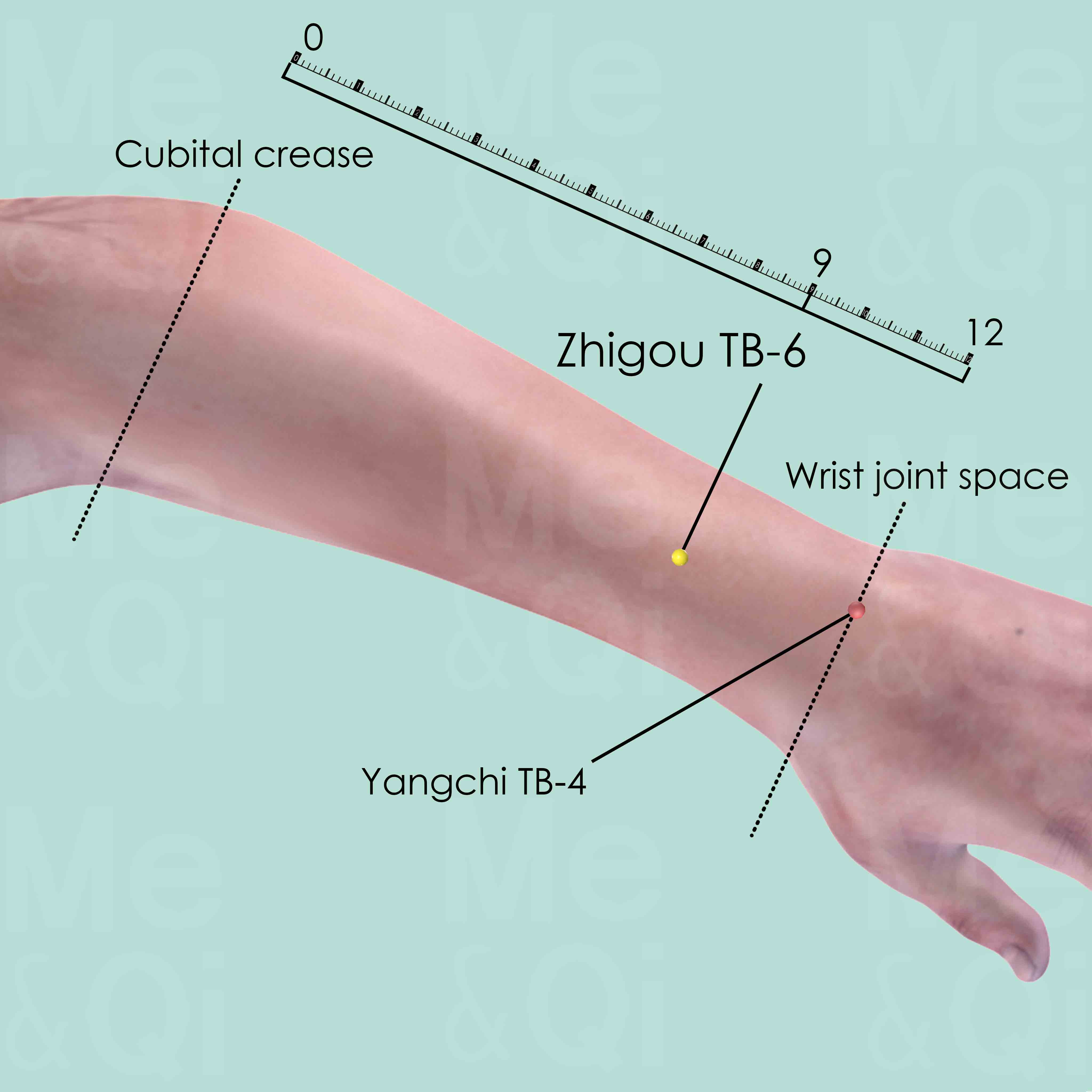Herpes Zoster Infectionaccording to TCM
Symptom family: Varicella-Zoster Virus (VZV) Infections
What is Herpes Zoster Infection?
Herpes zoster infection, more commonly known as shingles, is a viral infection marked by a painful rash that can appear anywhere on the body, typically presenting as a single stripe of blisters wrapping around one side of the torso. It's caused by the reactivation of the varicella-zoster virus, the same virus responsible for chickenpox.
After a person recovers from chickenpox, the virus can remain dormant in nerve tissue for years before reactivating as herpes zoster. The condition is often accompanied by severe pain, which can persist even after the rash has healed, a condition known as postherpetic neuralgia.
How Does TCM View Herpes Zoster Infection?
In Traditional Chinese Medicine (TCM), identifying the pattern of an illness is crucial because it reflects the underlying disharmony within the body's energy system that leads to symptoms. Unlike Western medicine, which often targets the symptoms directly, TCM focuses on the specific pattern of imbalance—be it from external pathogenic factors like Wind-Heat, or internal issues such as Qi Deficiency.
Understanding these patterns allows TCM practitioners to tailor treatments to the individual, aiming to restore balance and harmony, rather than merely addressing surface-level symptoms.
Causes of Herpes Zoster Infection According to TCM
TCM delves deeper into the root causes of herpes zoster, beyond its viral origin, by examining internal disharmonies that manifest as specific symptoms. The condition is often associated with patterns of imbalance such as Wind-Heat and Liver Fire Blazing. Wind-Heat represents the external invasion of pathogens that combine with internal heat, leading to the rapid emergence and spread of the rash.
Liver Fire Blazing, on the other hand, signifies an internal excess heat within the Liver meridian, contributing to the inflammation and pain seen in herpes zoster. Addressing these patterns is key to TCM's approach, focusing on the restoration of equilibrium and the enhancement of the body's natural defenses.
TCM Herbal Formulas for Herpes Zoster Infection
To counteract the patterns of Wind-Heat and Liver Fire Blazing in herpes zoster, TCM employs targeted herbal formulas. For Wind-Heat, Jing Jie Lian Qiao Tang, with its cooling herbs like Japanese catnip, works to expel the pathogenic heat and alleviate the rash.
In cases of Liver Fire Blazing, formulas such as Long Dan Xie Gan Tang and Xie Qing Wan, both featuring the cooling properties of Chinese Gentian, aim to douse the internal fire, reducing symptoms of inflammation and pain. These carefully chosen formulas are part of a broader strategy to rebalance the body's energies and promote healing from within.
Explore below some TCM herbal formulas used to address herpes zoster infection, organized by formula type.
- By Formula Type
- Formulas that clear wind-Heat
- Formulas that clear heat from the organs
Formulas that clear Wind-Heat
Herpes zoster infection can be treated by these formulas if it originates from a wind-heat invasion.
One such formula is Jing Jie Lian Qiao Tang, with japanese catnip as a key herb.
Other formulas of this category are listed in the table below.
All "formulas that clear wind-Heat" recommended for herpes zoster infection
| Formula | Key herbs |
|---|---|
| Jing Jie Lian Qiao Tang | Japanese Catnip (Jing Jie), Forsythia Fruits (Lian Qiao) |
| Sheng Ma Ge Gen Tang | Bugbane Rhizomes (Sheng Ma) |
Formulas that clear Heat from the Organs
Herpes zoster infection can be treated by these formulas if it stems from an excess heat condition in specific organs, leading to internal disharmony.
One such formula is Long Dan Xie Gan Tang, with chinese gentian as a key herb.
Other formulas of this category are listed in the table below.
All "formulas that clear heat from the organs" recommended for herpes zoster infection
| Formula | Key herbs |
|---|---|
| Long Dan Xie Gan Tang | Chinese Gentian (Long Dan Cao) |
| Xie Qing Wan | Chinese Gentian (Long Dan Cao), Notopterygium Roots (Qiang Huo) |
Acupoints for Herpes Zoster Infection
TCM also incorporates acupuncture as a complementary treatment for herpes zoster, targeting specific acupoints to alleviate symptoms and address the root patterns of disharmony. Huatuojiaji EX-B-2 points are selected for their capacity to harmonize the internal organs and mitigate pain by directly influencing the affected nerve pathways. Xuehai SP-10 is used to cool the blood and invigorate its flow, addressing the heat and stasis underlying the rash's appearance.
Additionally, points like Zhigou TB-6, Fengshi GB-31, and Quchi LI-11 play vital roles in regulating Qi, expelling Wind-Heat, and clearing Liver Fire, respectively. These acupoints are integral to the TCM strategy of treating herpes zoster, aiming to restore balance and facilitate the body's natural healing processes.
Explore below some acupoints used to address herpes zoster infection, organized by meridian.
- By Meridian
- Extra Points: Back (EX-B)
- Spleen Channel
- Triple Burner Channel
- Gall Bladder Channel
- Large Intestine Channel
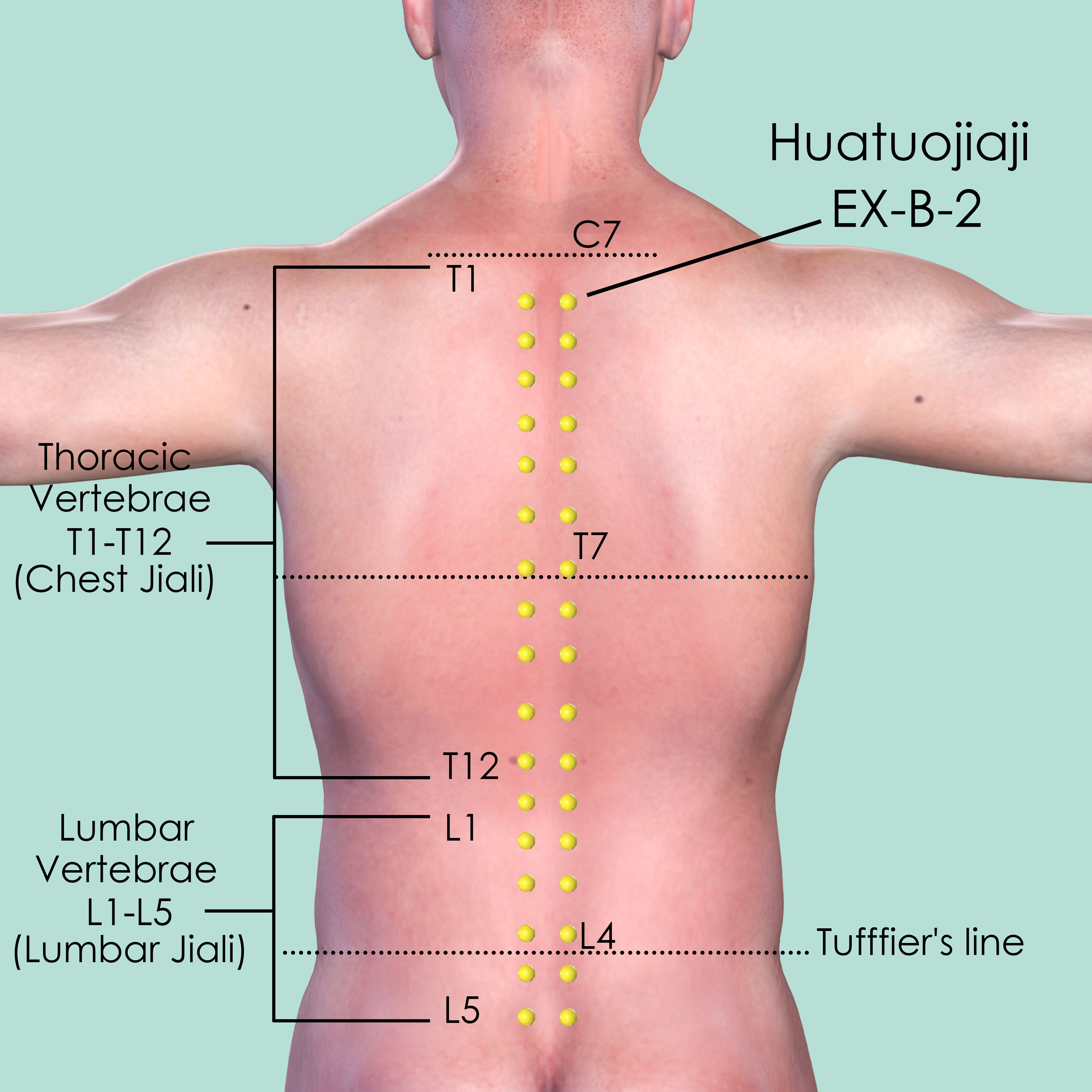
Huatuojiaji EX-B-2
This is a group of 17 point pairs. All of them are 0.5 cun lateral to the lower borders of the spinous processes of the 12 thoracic (Chest Jiali) and 5 lumbar vertebrae (Lumbar Jiali).
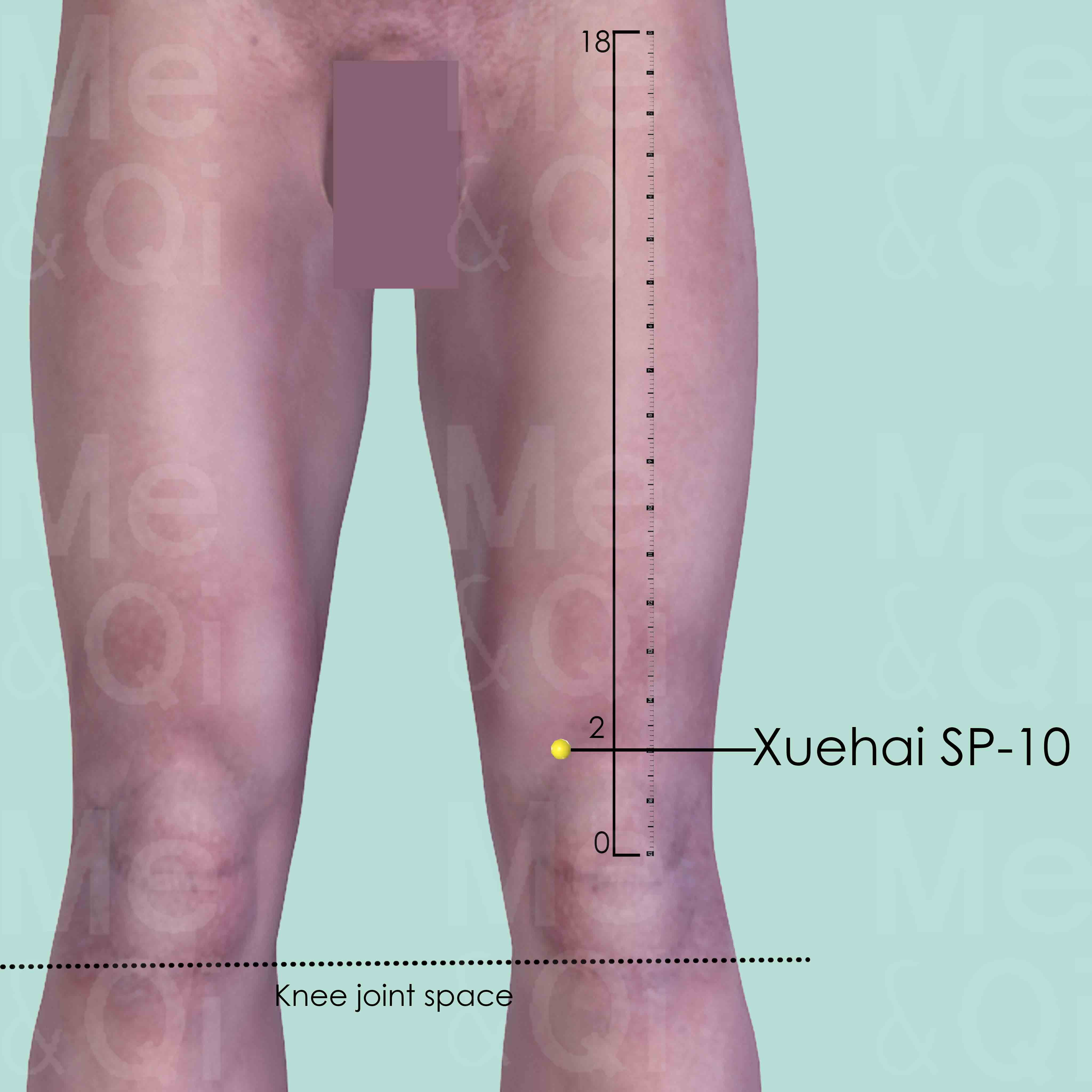
Xuehai SP-10
When knee is flexed, Xuehai SP-10 is 2 cun above the medial upper border of the patella, in a depression on the vastus medialis muscle.
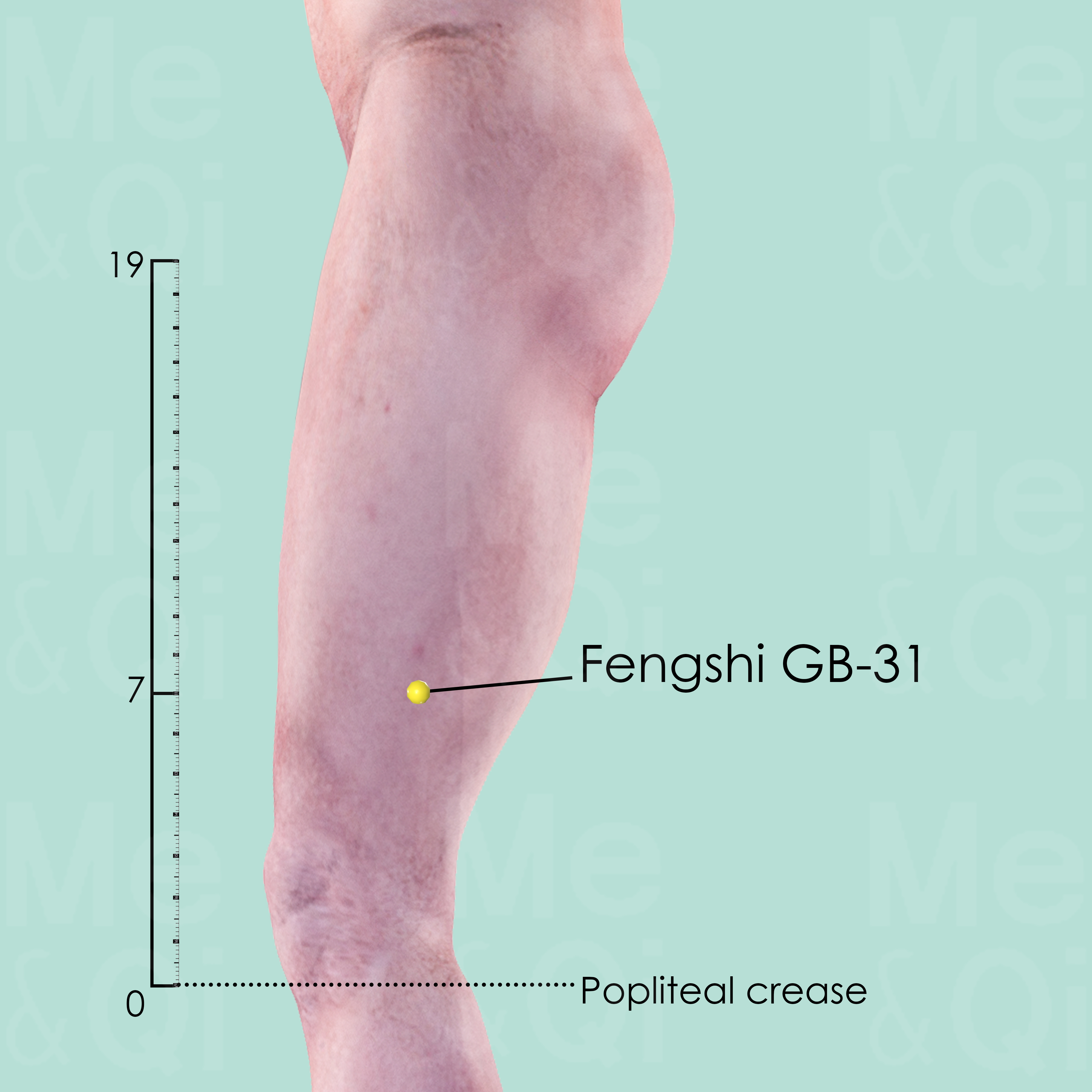
Fengshi GB-31
On the midline of the lateral aspect of the thigh, 7 cun above the transverse politeal crease.
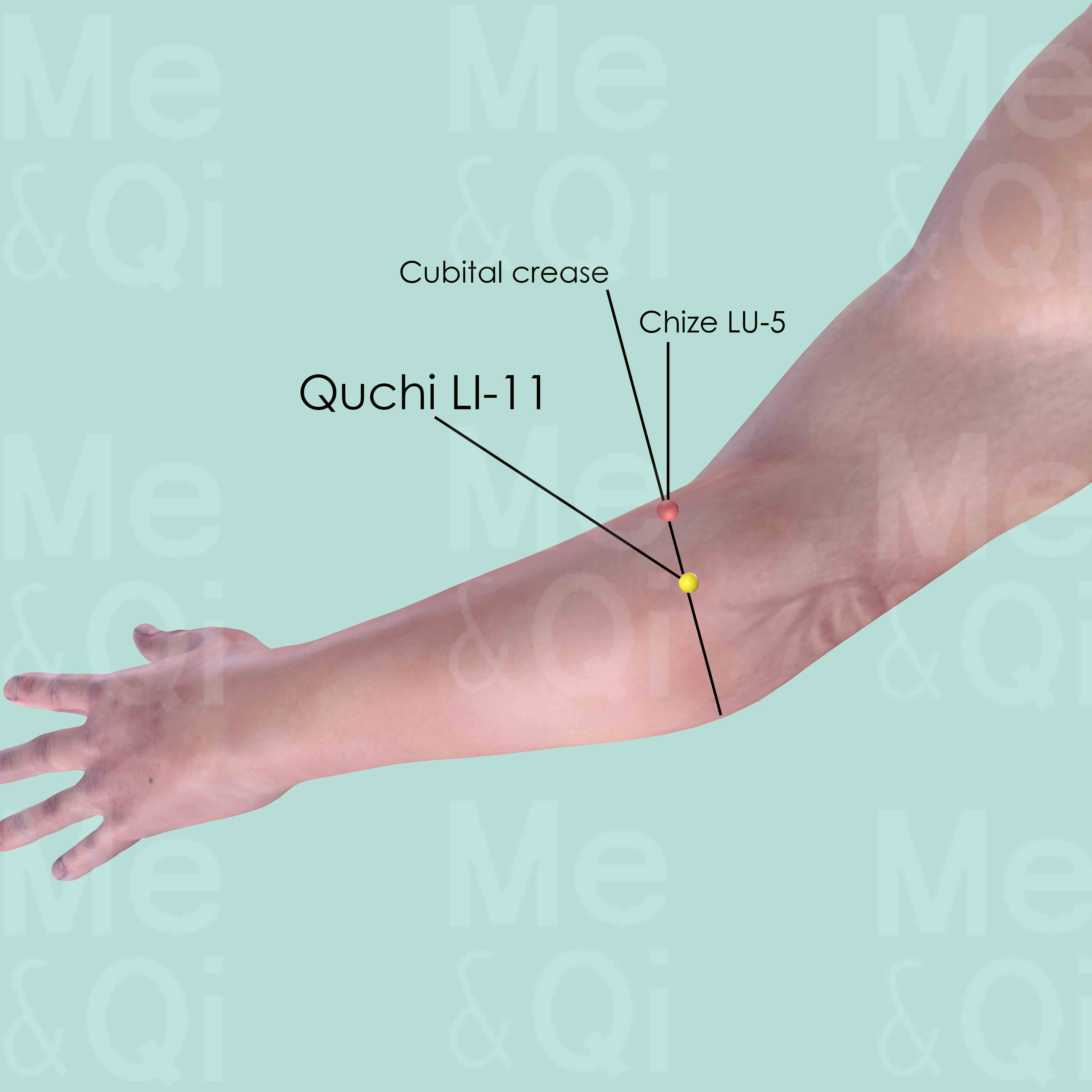
Quchi LI-11
When the elbow is flexed, Quchi LI-11 is in the depression at the lateral end of the cubital crease, midway between Chize LU-5 and the lateral epicondyle of the humerus.
TCM Herbs for Herpes Zoster Infection
Explore below some TCM herbs used to address herpes zoster infection, organized by herb category.
- By Herb Category
- Herbs that clear heat and relieve toxicity
- Warm/Acrid herbs that release the exterior
- Herbs that cool the blood
- Herbs for external application
- Herbs that clear heat and dry dampness
- Cool/Acrid herbs that release the exterior
Herbs that clear Heat and relieve Toxicity
Herpes zoster infection can be treated by these herbs if it arises from internal heat and toxic accumulations, aiding in detoxification and cooling the body.
One such herb is Forsythia Fruits (Lian Qiao), a key herb in some formulas recommended for herpes zoster infection, like Jing Jie Lian Qiao Tang.
Other herbs of this category are listed in the table below.
"Herbs that clear Heat and relieve Toxicity" recommended for herpes zoster infection
| Herb | Formulas they belong to (if applicable) |
|---|---|
| Forsythia Fruits (Lian Qiao) | Jing Jie Lian Qiao Tang |
| Andrographis Herbs (Chuan Xin Lian) | Not applicable |
Warm/Acrid herbs that release the Exterior
Herpes zoster infection can be treated by these herbs when there is a need to dispel external cold and warm the body, especially in cases where there is insufficient Yang energy internally.
One such herb is Japanese Catnip (Jing Jie), a key herb in some formulas recommended for herpes zoster infection, like Jing Jie Lian Qiao Tang.
Other herbs of this category are listed in the table below.
"Warm/Acrid herbs that release the Exterior" recommended for herpes zoster infection
| Herb | Formulas they belong to (if applicable) |
|---|---|
| Japanese Catnip (Jing Jie) | Jing Jie Lian Qiao Tang |
| Notopterygium Roots (Qiang Huo) | Xie Qing Wan |
Herbs that cool the Blood
Herpes zoster infection can be treated by these herbs when it is a consequence of excess heat in the blood, helping to cool and detoxify the blood.
One such herb is Hibiscus Leaves (Fu Rong Ye), which is directly recommended for herpes zoster infection.
Herbs for external application
Herpes zoster infection can be treated by these herbs when the condition is external or superficial, requiring topical treatment to alleviate symptoms or heal the affected area.
One such herb is Realgar (Xiong Huang), which is directly recommended for herpes zoster infection.
Herbs that clear Heat and dry Dampness
Herpes zoster infection can be treated by these herbs when caused by excessive dampness and heat within the body, aiming to restore balance by drying dampness and clearing heat.
One such herb is Chinese Gentian (Long Dan Cao), a key herb in some formulas recommended for herpes zoster infection, like Long Dan Xie Gan Tang.
Cool/Acrid herbs that release the Exterior
Herpes zoster infection can be treated by these herbs when the body needs to harmonize with external environmental changes, particularly when there's a need to expel pathogenic factors like wind or cold without overly cooling the body.
One such herb is Bugbane Rhizomes (Sheng Ma), a key herb in some formulas recommended for herpes zoster infection, like Sheng Ma Ge Gen Tang.

